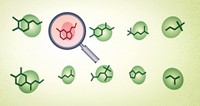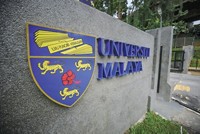Advertisement
Grab your lab coat. Let's get started
Welcome!
Welcome!
Create an account below to get 6 C&EN articles per month, receive newsletters and more - all free.
It seems this is your first time logging in online. Please enter the following information to continue.
As an ACS member you automatically get access to this site. All we need is few more details to create your reading experience.
Not you? Sign in with a different account.
Not you? Sign in with a different account.
ERROR 1
ERROR 1
ERROR 2
ERROR 2
ERROR 2
ERROR 2
ERROR 2
Password and Confirm password must match.
If you have an ACS member number, please enter it here so we can link this account to your membership. (optional)
ERROR 2
ACS values your privacy. By submitting your information, you are gaining access to C&EN and subscribing to our weekly newsletter. We use the information you provide to make your reading experience better, and we will never sell your data to third party members.
Policy
ACS Journals Tap Chinese Scientists
Editors aim to strengthen their interactions with a country that is a top generator of submissions
by Jean-François Tremblay
September 18, 2006
| A version of this story appeared in
Volume 84, Issue 38

On Aug. 1, for the first time, a Chinese academic became an associate editor of the ACS monthly journal Crystal Growth & Design. Maochun Hong, director of the Fujian Institute of Research on the Structure of Matter, joined a virtual team of four associate editors based in the U.S., the U.K., and now China.
The editor-in-chief of Crystal Growth & Design, Robin D. Rogers, who is also the Robert Ramsay Chair of Chemistry at the University of Alabama, says that in recent years, submissions from China to his journal have grown to the point that China is now his leading source of submissions, ahead even of the U.S. The appointment of Hong as associate editor begins what ACS hopes will be greater participation of the chemistry community of China not only in submitting manuscripts but also in evaluating their merits for publication.
"The Chinese government is putting a lot of resources into the academic infrastructure, generating a lot of new groups and hiring new professors," Rogers says. He notes that as part of its policies, the government has been actively luring back promising Chinese academics domiciled in foreign countries. "The result of that in the academic world is a lot of high-quality submissions from China," he says.
In July, ACS sent a delegation of journal editors to a symposium at the Institute of Chemistry of the Chinese Academy of Sciences (ICCAS) in Beijing to explain how ACS journals are run and what is expected of scientists submitting papers. The delegation then traveled to Changchun, in the country's northeast, to attend the annual meeting of the Chinese Chemical Society. Rogers recruited Hong in Changchun during this trip. He knew of Hong from consultations he had had with colleagues and academics in the U.S. and China.
Hong's new responsibilities will entail reviewing papers that Rogers will assign to him. Hong will also select referees and obtain reports from them. The papers may or may not be from China; what papers Hong gets will be more a function of his area of expertise. Rogers expects that Hong will represent the journal at meetings and answer queries from Chinese academics.
Hong tells C&EN he's delighted by his new responsibilities. He notes that being the director of his institute keeps him busy enough as it is, but he adds that he is scheduled to pass that baton to someone else in two years and will then have more time for Crystal Growth & Design. In the meantime, he plans to hire a recently retired professor to assist him with his new ACS duties on a full-time basis. "You could only afford this extra help in China; it's much too expensive abroad," he notes.
At present, very few academics based in China serve as associate editors or editorial advisers of ACS journals. Hong says this situation may be the result of a lack of familiarity in the U.S. with the Chinese academic world. Another possible factor is that the relatively young people who form the majority of scientists in Chinese universities and institutes "may not be so keen" to serve on international journals. He says they are too harried on a day-to-day basis to take an active interest in such roles.
Robert D. Bovenschulte, president of ACS Publications, which also publishes C&EN, says the society encourages its journal editors to search for candidates in China to serve as associate editors or editorial advisers. "It sends a message to the Chinese that we value the papers they submit and value their role as reviewers," he says.
But he cautions that it will take time for the number of Chinese academics contributing to the administration of ACS journals to grow noticeably. He notes optimistically that a handful of ACS journals are in the process of securing associate editors in China, although it's premature to say which ones. He disagrees with the suggestion that ACS started the process of identifying and recruiting suitable editors from China too late and says the society is not behind other scientific publishers in this regard. "ACS has become appropriately involved in the development of scientific research in China as it has emerged," he says.
The rise in the number of submissions from China comes with its share of problems. One is that the quality of submissions from China has been uneven, and so among the gems that ACS receives are also too many substandard submissions, according to people who are familiar with the situation.
Subpar submissions may describe discoveries that might be considered trivial for international journals. Or a paper may be impossible to review because the English it's written in cannot be understood. In the worst cases, Chinese authors submit papers that they are simultaneously submitting elsewhere or that have already been published in China, practices that are unethical by international publishing standards. Most egregious are papers based on fabricated results, as was described in Nature recently (2006, 441, 392).
Bovenschulte says the increase in unethical behavior by scientists submitting papers for publication is not a problem that is confined to China.
Leonard V. Interrante, a professor of chemistry at Rensselaer Polytechnic Institute in Troy, N.Y., and the editor-in-chief of the ACS journal Chemistry of Materials, took part in the ACS delegation this summer. He says he was most impressed by the facilities he saw in China, particularly at ICCAS and at the University of Jilin. During the trip, he recruited a Chinese academic to be a member of the journal's advisory board, the first ever. The Chemistry of Materials advisory board has about 60 members and is a "cross section of the type of authors we'd like to attract," he says.
Interrante tells C&EN that the large number of subpar papers coming from China is causing editorial boards and reviewers at many scientific journals in the U.S. to take a negative view of Chinese submissions. He says that when handling a paper from China, reviewers in the U.S. may make "an unfortunate association" between China and substandard research. Yet China ranks second behind the U.S. in the number of submissions to Chemistry of Materials, Interrante notes.
"some papers are first-class," he reports. "But there is perhaps a lack of clarity in China about the standards of international journals," he says.
Much as an ACS delegation to China discovered last year (C&EN, May 16, 2005, page 47), Interrante says Chinese academics are under tremendous pressure to publish in international journals with high impact factors in order to obtain funding. At the same time, he notes, lack of cash and problems with obtaining visas prevent scientists in China from participating in as many international scientific meetings as their counterparts in Western countries and Japan do.
Li-jun Wan, director of ICCAS, tells C&EN he was unaware that some journal editors and reviewers in the U.S. were becoming wary of submissions from China. Similarly, Hong, the new Crystal Growth & Design associate editor, tells C&EN that the problem of scientific fraud in China is not particularly worse than in other countries.
Crystal Growth & Design's Rogers is unequivocally enthusiastic about the growth in submissions from China that his journal receives. He says some journal editors and reviewers may have complaints about Chinese papers not because too many are subpar but because reviewing them represents a tremendous increase in workload. "There are so many papers now coming from China, so our job is a little more difficult; it puts pressure on our resources," he says. Despite the challenges, Rogers says, "it's our responsibility to fairly judge these papers."
Bovenschulte says ACS will continue launching initiatives to further engage the Chinese scientific community. One idea being considered is to invite Chinese academics to spend time working in the office of ACS journals in the U.S. And other ACS delegations will visit China. "The details are not there, but it's part of our strategic plan to engage China," Bovenschulte says.





Join the conversation
Contact the reporter
Submit a Letter to the Editor for publication
Engage with us on Twitter